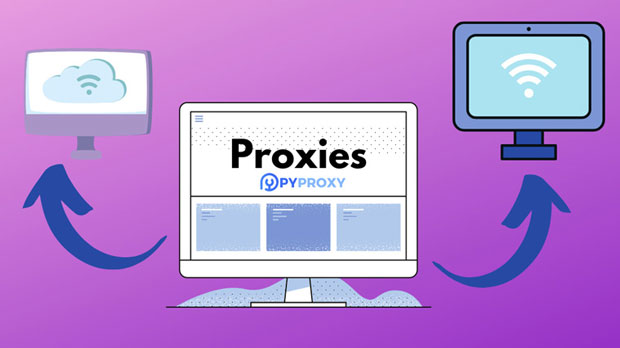The basic architecture of a PYPROXY proxy server revolves around providing secure, anonymous, and efficient communication between clients and servers. PyProxy is built using Python programming language, leveraging powerful libraries to manage proxy functionalities. It is designed to enhance privacy by acting as an intermediary that masks the client's identity and encrypts communication. This server allows users to connect to the internet via another server, thus enhancing security, bypassing geo-restrictions, and controlling access to certain services or content. The proxy server operates by forwarding requests from the client to the server, receiving the server’s response, and then relaying it back to the client. 1. Key Components of PyProxy Proxy ServerThe PyProxy proxy server, like any other proxy, consists of several key components. Each component plays a crucial role in ensuring the server functions as intended. Understanding these components helps in configuring the server for specific use cases.1.1 Proxy ServerThe proxy server itself is the heart of the architecture. It acts as a mediator between the client and the destination server. When a client requests data from a server, the proxy server first intercepts the request, processes it, and then forwards it to the intended destination. The server acts as the ‘middleman,’ and depending on the proxy type (HTTP, SOCKS, etc.), it can filter, cache, and encrypt data, enhancing security and privacy.1.2 Client and Proxy CommunicationClient communication with the PyProxy server is essential for the functioning of the entire system. Clients send their requests to the proxy server, and the proxy handles the request before forwarding it to the actual destination server. The data is relayed back to the client through the proxy server, thus masking the client’s identity. Communication between the client and the proxy is secured via protocols such as HTTPS, ensuring confidentiality and protection against data interception.1.3 Destination ServerThe destination server is the server that holds the actual data requested by the client. In typical proxy configurations, the destination server is unaware of the client’s identity as all requests are sent through the proxy server. The destination server responds to the proxy server, which then passes the response back to the client.2. Proxy Server TypesThere are various types of proxy servers available, each serving different purposes. The classification of proxy servers allows users to choose the appropriate configuration for their needs. Understanding the different types of proxies that PyProxy can support is crucial when configuring it.2.1 HTTP ProxyAn HTTP proxy handles web traffic, specifically HTTP requests. It is widely used for browsing the web, accessing websites, and filtering content. When using an HTTP proxy, the server forwards HTTP requests to destination servers on behalf of the client. It’s important to note that this type of proxy does not handle HTTPS traffic, which is encrypted and requires a different approach.2.2 HTTPS ProxyHTTPS proxies are designed to handle encrypted traffic. They operate similarly to HTTP proxies but are more secure due to the encrypted nature of HTTPS traffic. When a client sends an HTTPS request, the proxy decrypts the data, forwards the request, and re-encrypts the response before sending it back to the client. This adds a layer of security to the communication.2.3 SOCKS ProxyA SOCKS proxy can handle all types of traffic, including HTTP, HTTPS, FTP, and even torrenting. Unlike HTTP or HTTPS proxies, which are restricted to specific protocols, SOCKS proxies offer greater flexibility and are commonly used for applications that require anonymous and versatile proxying, such as online gaming, video streaming, and file sharing.3. Proxy Server Functions and Security FeaturesThe core functionality of the PyProxy server lies in the security features it provides. These include traffic encryption, anonymity, caching, and access control. Let's delve deeper into each of these functionalities.3.1 Anonymity and PrivacyOne of the primary reasons users employ proxy servers like PyProxy is to maintain anonymity. When a client sends a request through a proxy server, the destination server is unable to see the original IP address of the client. Instead, it sees the IP address of the proxy server. This ensures that the client’s identity is hidden, providing privacy during web browsing or when accessing restricted content.3.2 Traffic EncryptionEncryption is another critical function of a proxy server. With PyProxy, users can secure their traffic by using encryption protocols such as SSL/TLS. This ensures that the data transmitted between the client and the destination server remains confidential and is protected from man-in-the-middle attacks or interception.3.3 Content FilteringContent filtering is a feature supported by some proxy servers. It allows users to restrict access to certain types of content, such as malicious websites or websites that may contain harmful materials. Organizations often use content filtering to ensure that employees only access work-related websites.3.4 CachingCaching allows a proxy server to store frequently accessed data in memory. This helps reduce the load on destination servers and improve response times for clients. Cached data is sent to clients directly without requiring a new request to be made to the destination server. This is particularly useful for large-scale services or websites where multiple clients are requesting the same content.4. Benefits of Using PyProxy Proxy ServerUsing a PyProxy proxy server provides several benefits, particularly for individuals and organizations seeking privacy, security, and enhanced access control.4.1 Improved Privacy and AnonymityOne of the most significant benefits of using a PyProxy proxy server is the enhanced privacy and anonymity it provides. By masking the client’s IP address, the server prevents websites and destination servers from tracking user activity and collecting personal information.4.2 Access to Restricted ContentPyProxy can help users bypass geographical restrictions, allowing access to content that may be otherwise restricted based on location. This is especially useful for accessing services or websites that are blocked or unavailable in certain regions.4.3 Enhanced SecurityBy using encryption and anonymization techniques, PyProxy enhances security. It prevents hackers from intercepting sensitive data, thus protecting the client’s information during transactions or browsing activities.4.4 Load Balancing and Performance OptimizationIn high-traffic scenarios, PyProxy can assist in load balancing by distributing incoming requests to multiple servers. This ensures that no single server becomes overwhelmed, improving the overall performance and responsiveness of the system.5. Challenges and ConsiderationsDespite its many benefits, there are certain challenges and considerations when deploying a PyProxy proxy server. These include performance issues, proxy server maintenance, and potential legal concerns related to the use of proxies.5.1 Performance and LatencyOne of the potential challenges of using a proxy server is the added latency that can occur due to the extra step of routing traffic through the proxy. While modern servers aim to minimize this impact, users should expect some degree of performance degradation, especially if the proxy is handling a large volume of requests.5.2 Proxy Server MaintenanceMaintaining a proxy server involves regular updates, monitoring, and troubleshooting. Ensuring the proxy server operates optimally is critical to providing continuous service. Server downtimes or issues can affect the overall user experience.5.3 Legal and Ethical IssuesThe use of proxy servers can sometimes raise legal and ethical issues, particularly if they are used to bypass restrictions, evade detection, or access prohibited content. It is essential to understand the legal implications of proxy usage in your region before deploying a PyProxy server.In conclusion, the architecture of a PyProxy proxy server is robust, featuring essential components like proxy servers, client-server communication, and destination servers. It offers various functionalities, including anonymity, traffic encryption, caching, and content filtering, making it an invaluable tool for enhancing security, privacy, and performance. However, it is important to address challenges related to performance, maintenance, and legal concerns. Understanding the basic architecture and functions of PyProxy helps users leverage it effectively for secure and efficient internet access.
Sep 18, 2025



































































